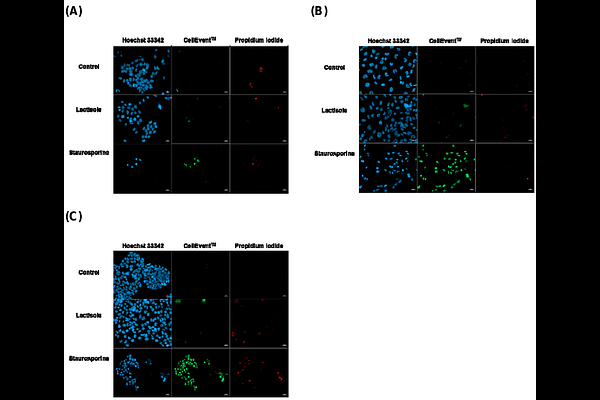Sweet taste receptor regulates proliferation and glucose uptake in glioblastoma cells

Sweet taste receptor regulates proliferation and glucose uptake in glioblastoma cells
Costa, A. R.; Duarte, A. C.; Jorge, A. C.; Goncalves, I.; Lucas, C.; Matos, I. R.; Santos, C. R. A.
AbstractGlioblastoma is a brain tumour classified by the World Health Organization as grade 4 due to its aggressiveness, invasiveness, and poor differentiation. Current standard therapies remain largely ineffective, reinforcing the need for novel targets to improve glioblastoma prognosis. Reprogramming of cellular metabolism is an important hallmark of cancer, marked by a shift from oxidative phosphorylation to glycolysis as the primary energy source. This metabolic switch, known as the Warburg effect, is exacerbated by the reduced oxygen and glucose availability in the tumour microenvironment. The sweet taste receptor (STR) is an important glucosensor with recognised role in the regulation of glucose uptake in several organs and in astrocytes, the glioblastoma precursor cells. We hypothesised that STR may regulate glucose uptake and metabolism in glioblastoma, representing a potential anticancer target. To test this, we investigated the effects of STR inhibition with lactisole, a specific TAS1R3 inhibitor, in three glioblastoma cell lines (U-87MG, SNB-19 and U-373MG) and in the UPCI-SCC-154 tongue cancer cell line. We provided evidence that STR inhibition consistently reduced cell viability and migration, without inducing apoptosis or necrosis, and impaired glucose uptake and L-lactate production, particularly in tongue cancer UPCI-SCC-154, and glioblastoma U-87MG and SNB-19 cells. Moreover, in a 3D spheroid model, lactisole reduced the invasion capacity of U-87MG glioblastoma spheroids. These results suggest that STR contributes to glioblastoma cell metabolism and behaviour and may represent a promising therapeutic target.